Intro
With the release of Atelier Sophie: The Alchemist of the Mysterious Book on Steam, this reviewer managed to get his hands on what would be his first Atelier game. A little bit about the Atelier series first; they are a selection of Japanese role playing games where Alchemy is the main theme. The player controls the game’s character, exploring the world to collect various objects to use in alchemy recipes. These recipes are used to create new objects such as recovery items, tools, weapons, etc to help you in the game and progress through the story.
This time round you play as the Alchemist Sophie Neuenmuller, who lives in a small town called Kirchen Bell. Without a mentor or reference guide to help her, she finds herself repeatedly failing at alchemy. One day she comes across a mysterious book named Plachta who can move and talk by itself. She realises Plachta has lost her memories, and used to have a human form, so Sophie and her friends set out to restore her lost memories and return her human form.
When purchased on steam you will get a great selection of DLC. This includes a collection of items that will aid you on your play through, fan favourite tracks from previous Atelier games, costumes for Plachta and an additional “Hidden Archive” mission.

Gameplay
Atelier Sophie features a reformed world view from the previous entries in the series, it also has a new weather system that effects how the game world plays out. Based on the current time and weather, items in shops could be discounted and specific types of enemies and materials will appear whilst exploring. The player is able to control a party of up to four character to traverse the world. There is also friendship system, where investing time into the characters will deepen the bonds between each character. It leads to new features and members being unlocked for your party. There are also randomized requests, serving as side quests, which grant you money and rare resources on completion. To progress through Atelier Sophie there is a pattern in which you have to get new recipes to trigger cut scenes, which in turn advances the story as well as unlocks new areas for you to go and gather resources and advance recipes.
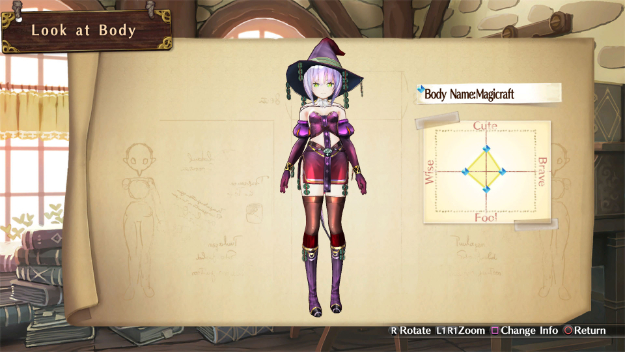
With the complete new alchemy-centric system you are able to obtain ideas for recipes from activities such as exploring, battling, harvesting and events. The ideas are then used as a basis of improving your knowledge in alchemy. When Sophie is performing alchemy, you are given various predetermined shapes that represent the ingredients that you are using. The player must then use the shapes in the puzzle-like board that represents the cauldron. This process is a lot of trial and error to make sure that the shapes are arranged perfectly. Once they’re arranged you can complete your recipe and receive any bonuses, be warned that the materials you select have a huge effect on the quality of the items you’re synthesising.
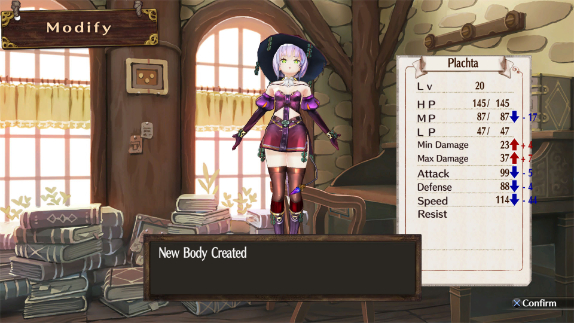
Alchemy
Like stated above there is a new alchemy system in Atelier Sophie. Once you have gathered the right ingredients for a certain recipe you can go to the cauldron in your house and begin the synthesising process. It consists of five steps, these are; selecting the ingredients you wish to use, selecting the type of cauldron (this is due to there being different types of cauldrons), arranging the shapes to receive the bonuses and then reviewing the bonuses you’ve acquired. The final step is selecting which of the bonuses you intend to keep. It feels like a little mini-game and it’s very enjoyable and you’ll spend a lot of the game making different items and trying to get the best bonuses.

Dollmake
This is a brand new feature, it allows the player to freely customise Plachta using costume items that are crafted by the player via alchemy. As the number of items crafted via alchemy increase so do the number of customisation options. It’s a very good feature that allows the player to explore more into Plachta. When you go into the doll making menu you have three options Modify, look at body and quit. Look at body lets you look at Plachta. The one that matters is modify once selected, the player is given the options to select different materials to enhance and customise Plachta. Once you have confirmed the stats you’re after you’ll get a brand new Plachta with different stats and even a fancy new look!

Travelling
The travelling system is very simple and easy to use. In the main town you can walk around and get to each location by foot, or as I found myself doing, using the fast travel feature that lets you get around the town with a breeze. The best part with this is there is minimal loading times so it doesn’t interrupt gameplay at all. When you go into the over world you are faced with a map that has locations dotted around. You unlock more as the game progress and can simply travel to a destination by clicking on the place you want to go. Travelling in the over world depletes LP. LP represents stamina necessary for exploration. Moving around the world map, gathering and even combat all consume it. All stats will be reduced when it falls below a certain point so you need to make sure you bring enough food as you can restore it through eating. Bottom line if you’re heading out on a big adventure make sure you’re fully prepared and equipped. You will occasionally come across red dots on the map, these can be good or bad, if they are bad you might encounter monsters and have to battle it out but when you’re lucky you could get little rewards such as money.
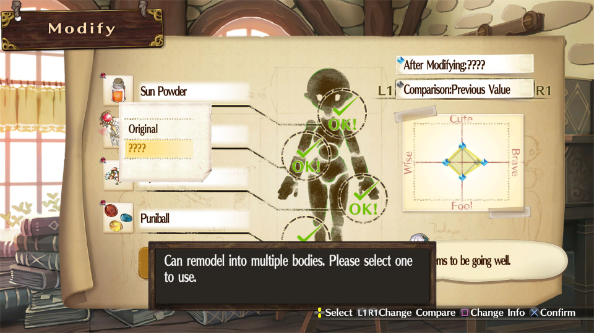
Combat
During combat, all ally and enemy actions will be performed at once each turn. After the enemies you are fighting have determined there actions, you can select actions for you and your allies to perform. Actions can be selected through commands. On the left hand side it shows the turn order and goes from top to bottom. Though the order can be affected by different actions performed. In combat you are able to use items such as bombs and potions. The main factor in combat is “Stance”. There are two types Offense and Defence. When using the offense stance it increases your attack power and allows allies to use additional attack to support each other. The other one is “Support Attacks” this one increases defence and allows allies to use the support action “Support Guard” to shield allies who are being attacked. Making the right decisions with stances can gain you the advantage in battle, always take advantage of the enemy action order and forecasts to perform the best stances. After a little progression in the story you can also perform “Special Support” actions, these happen when 3 or more allies are in the same stance. Special Support abilities are extremely powerful but they also consume large amount of your chain link gauge so timing is key when performing these epic moves.
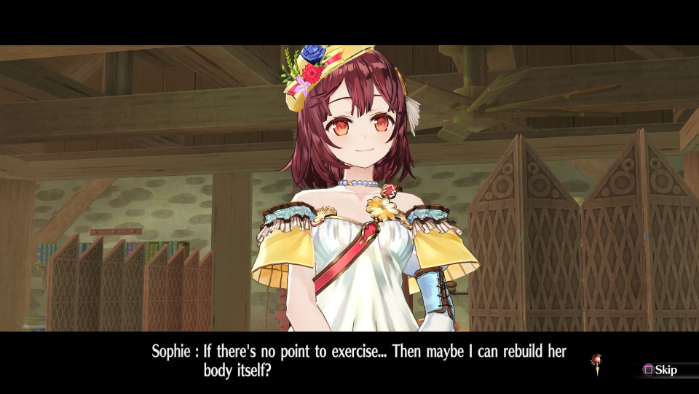
Weapon & Armour Crafting/Enhancing
Through progression in the game you will unlock the ability to craft and enhance your weapons and armour. Available through the Blacksmith and Clothing shop you can craft an array of different weapons and armour for party members. All you will need is weapons materials for the weapons and armour materials for the armour as well the other specified materials. Then we come onto enhancing your weapons and armour. This can be performed from the same place and works by using new materials to boost the stats of whatever it is you’re enhancing. Each item has a number of times that it can be enhanced. The stats gained all depend on the quality and traits of the items used. Crafting and enhancing becomes very important because it keeps you on top of your game and not constantly being killed by the array of enemies out in the world.
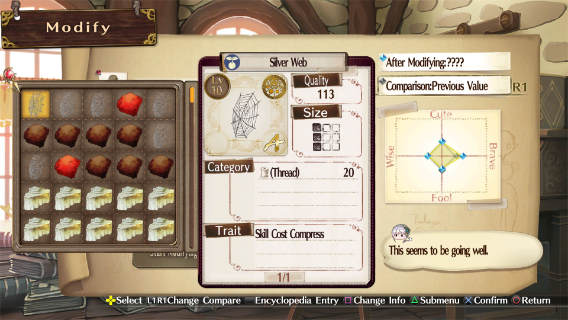
Visual & Audio
The game is visually stunning, I’m a huge fan of the cel-shaded anime style games that we come to love from most JRPG’s. Though sadly there are times when the character animations are poor, for example when the characters are talking; the lips don’t always sync up. Other than this, the animation of the characters and monsters you encounter are good as well as their fight animations. The audio for the game is very relaxing and I find myself just getting lost in the atmosphere while playing Atelier Sophie. Not to mention how much I enjoy the opening song when the game first loads up, as well as the one that plays in-game too. It’s the type of soundtrack you find yourself listening to outside of the game.
Positives & Negatives
Positives
- Relaxing and enjoyable to play
- Good characters that work well together
- Fun alchemy-centric system
Negatives
- Gameplay can feel repetitive after a while
- The environment feels like it could do with more AI and life
- The animation can feel static in some areas of the game
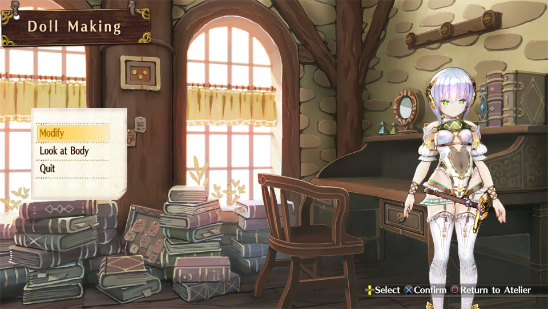
Conclusion
After playing this game I would definitely recommend it to people and also say it’s a brilliant starting point for anyone wishing to get into the series with, it being the start of the brand new ‘Mysterious’ series. At times the game can feel repetitive, though in its own weird way this is very relaxing and suits the game. The main story is quite bland and doesn’t really urge you to move forward. The characters all bounce well off each other and you’ll find yourself interacting with the AI more than going through the story. Some of the areas in the game feel empty and could use a bit more life, though graphically they look brilliant. Compared to other JPRGs the game feels very slow paced but that’s not really a problem. Atelier Sophie: The Alchemist of the Mysterious Book really got my attention from the get go with its character, combat and alchemy-centric system. I found myself picking up the controller and playing the game for what felt like an hour, but really being much more. For these reasons I’m happy to give this game a score of 7 out of 10.
Atelier Sophie: The Alchemist of the Mysterious Book was review on PC Via steam, the game is also available for PlayStation 4

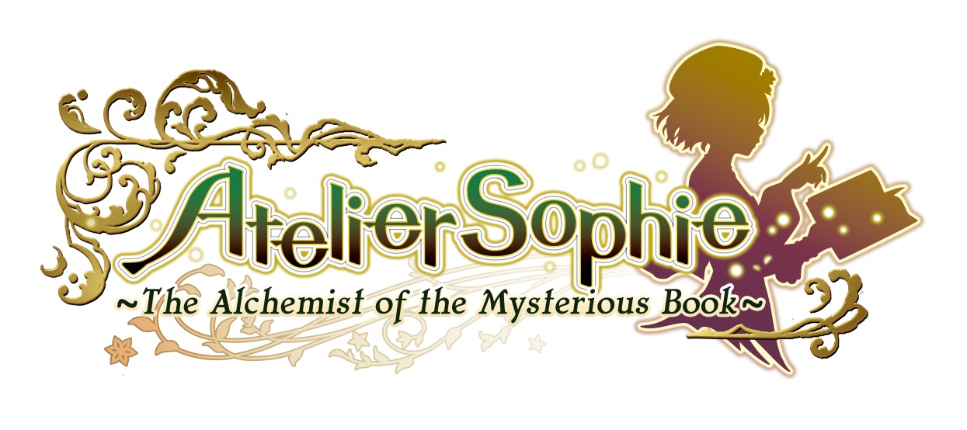






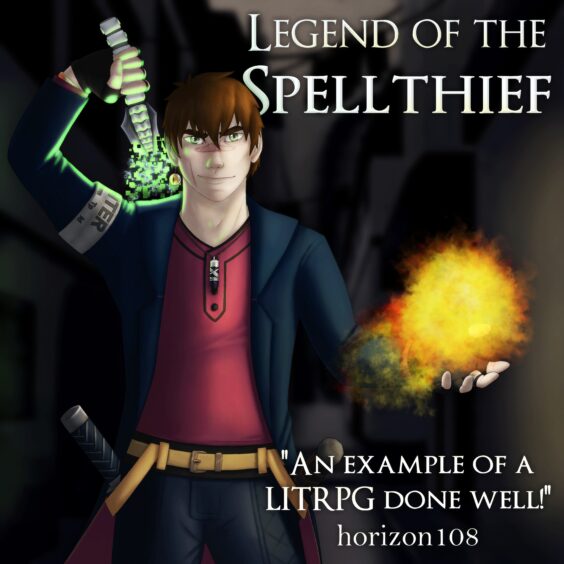
You must be logged in to post a comment.